Annelids are more complex than mollusks and are the most complex of all worms. This complexity is apparent when you look at their organ systems. In the activity below, click each tab to learn about the different organ systems of Annelids.
Circulatory System
Nervous System
Excretory System
Digestive System
Reproductive System
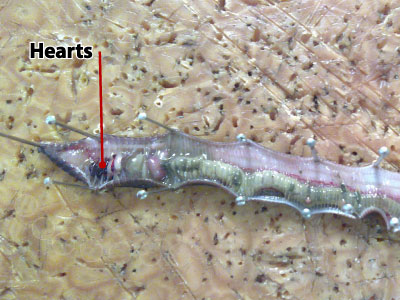
Most Annelids have a closed circulatory system, meaning that the blood is enclosed in vessels--arteries, veins, and capillaries. There are a series of hearts on the anterior side of the body that pump the blood throughout the entire animal, as seen in this picture.
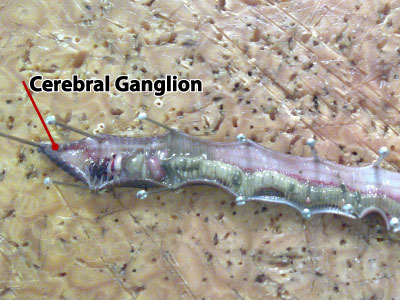
There is a nerve cord that runs the length of the body on the ventral (belly) side. On the anterior end of the worm lies a highly developed and concentrated group of nerve cells, or a very simple brain, called the cerebral ganglion. What other organs are located on the anterior end of annelids? Think of the answer, then click Show Me to see if you're correct.

The Annelid hearts are also located on the anterior end of the body.
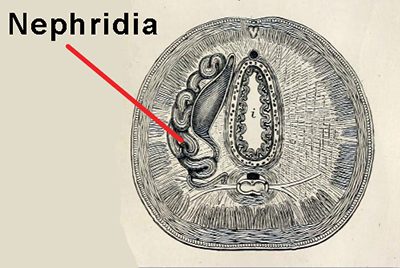
Pictured is a cross section of an Annelid. Every
segment contains
excretory organs, including nephridia.
There are excretory organs within each segment of an Annelid. Located within the coelom are nephridia, which are funnel-shaped organs that collect fluid wastes. The nephridia is connected to a duct that connects to the outside via a pore. The fluid wastes exit out this pore, which is present on every segment.
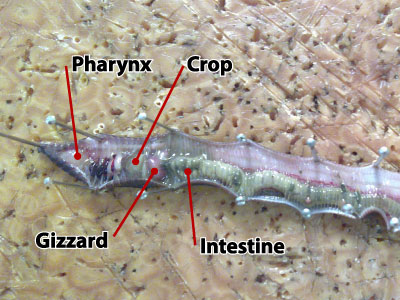
The digestive system runs the length of the Annelid worm's body and is made up of different parts with different functions. Food first enters the mouth and goes down a muscular pharynx that pushes food down into the esophagus. Next, the food is transported to the crop, which stores the food momentarily. The food then gets pushed into the gizzard, which is equipped with stones inside it to help grind the food down to very tiny pieces that go into the intestine. The intestine secretes digestive enzymes to completely digest the food. The cells lining the intestines take up the nutrients, which are then transported by the circulatory system to all the cells in the Annelid's body. The food wastes then exit an opening called the anus, which is located at the posterior end of the Annelid's body.
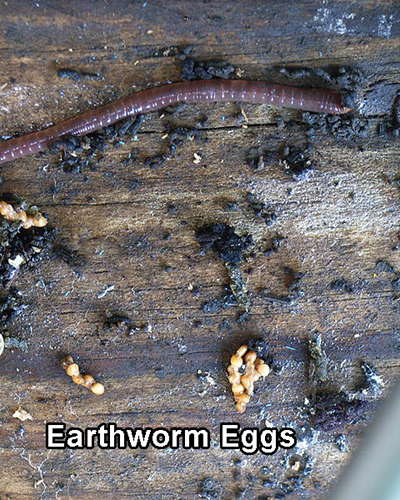
The small brown structures are
fertilized Annelid eggs. When
hatched, they will look like a smaller
version of an adult earthworm.
Annelids can reproduce both asexually and sexually.
Annelids can reproduce asexually in three ways--fragmentation, budding, and fission. Fragmentation is the ability to grow a copy of the parent with a fragment that breaks off the original body. Budding is when the worm has an outgrowth that eventually separates to grow into a brand new individual. Fission occurs when the worm splits in half to create two new copies of the original worm.
Annelids have individuals with different sexes, but many are also hermaphrodites. Hermaphrodites are organisms that contain both male and female gametes (sperm and eggs). In marine Annelids, their fertilized eggs grow into free-swimming larvae. For terrestrial Annelids, miniature sized adults hatch out of fertilized eggs that are encased in a cocoon.
